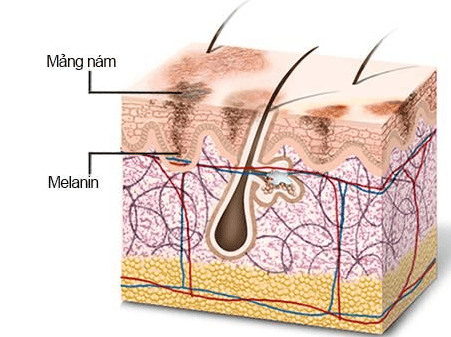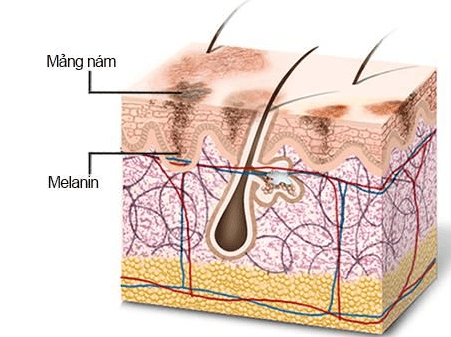This is an automatically translated article.
Melanin is the name for the group of substances that regulate color in organisms. They have three main groups: eumelanin, pheomelanin, and neuromelanin. While eumelanin and pheomelanin are the most common pigments with brown, black, yellow, and red colors, neuromelanin is found only in the brain and has the effect of masking the internal structure.
1. Overview of melanins
Melanins are pigments produced by a wide variety of organisms, including fungi. Melanins play an important role in protecting against environmental stressors. For pathogenic fungi, melanins have beneficial effects ranging from protecting fungal cells against oxidative stress from the environment and from toxins that cause infections in mammals. Although, the biochemical structure and dynamics of melanin in the fungal cell wall remains enigmatic. But our current knowledge of fungal melanosis has led to critically important insights into the pathogenesis of fungal infections and facilitated the development of new therapies.
2. Similarities and differences of melanin and neuromelanin
Melanin is a pigment that is synthesized either via or without enzymes from dopamine, l-DOPA and l-tyrosine. Melanocytes include catecholaminergic cells in the brain, melanocytes of the hair and skin, and pigment cells in the inner ear, iris, and choroid of the eye.
The synthesis pathway, chemical structure and function of melanin are different from those of neurons and peripheral cells. In neurons such as adult catecholaminergic, coeruleus loci, and brain stem loci, neuromelanin is produced in the cytoplasm primarily by dopamine auto-oxidation. However, neuromelanin enzyme synthesis is also conducted by tyrosine hydroxylase, peroxidase, prostaglandin H synthase and macrophage migration inhibitory factor.

Melanin là một hắc tố được tổng hợp ở da, tóc và mắt
Neuromelanin was isolated from the substantia nigra (Substantia nigra-SN) consisting of three main components, melanin, protein and lipid with different electron densities. The melanin polymer had the highest density, the protein component showing at intermediate densities, while the third lipid component had indistinct density.
Melanin is a mixture of layers of melanin, brown black eumelanin and yellow - red pheomelanin. Eumelanin consists of indole derivatives produced by auto-oxidation of dopamine, while pheomelanin contains benzothiazine molecules from combining cysteine or Glutathione with dopamine – the quinone derived from dopamine by autooxidation.
The higher structure of the Neuromelanin molecule is a multilayered three-dimensional structure similar to synthetic and natural melanin. Recently, atomic force microscopy has revealed the spherical structure of Neuromelanin particles with a diameter of about 30 nm. The spherical structure of Neuromelanin consists of a more oxidisable pheomelanin core and a less redox-reactive eumelanin surface. Neuromelanin binds most strongly to iron, zinc, copper, manganese, chromium, cobalt, mercury, lead and cadmium.
Please dial HOTLINE for more information or register for an appointment HERE. Download MyVinmec app to make appointments faster and to manage your bookings easily.
Reference source: sciencedirect.com












